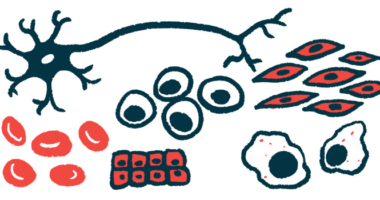Largest ALS patient-based stem cell, biodata resource opens for research
Repository contains biodata from 1,000 ALS patients and specialized nerve cells

Answer ALS and Cedars-Sinai have made openly available their amyotrophic lateral sclerosis (ALS) patient-based stem cell and biodata repository to researchers worldwide.
The largest of its kind, the repository contains biological and clinical data from nearly 1,000 ALS patients, as well as specialized nerve cells called induced pluripotent stem cells (iPSCs) derived from the patients that scientists can use as a resource for advancing ALS research and treatment.
Researchers can access the resources via the online, open-source Answer ALS Neuromine Data Portal and the Cedars-Sinai Biomanufacturing Center.
“We believe this comprehensive platform will serve as a critical resource for the scientific community, propelling research into ALS pathogenesis [how a disease develops], therapeutic development, and precision medicine approaches,” Clive Svendsen, PhD, director of the Board of Governors Regenerative Medicine Institute at Cedars-Sinai, said in a press release.
iPSCs increasingly being used in research
iPSCs are increasingly being used as a research tool to examine disease mechanisms and treatment strategies for a range of conditions in which the diseased cells are too difficult to obtain. The approach involves taking a person’s cells from an easy-to-collect source (like the blood or skin) and reprogramming them in the lab back into a stem-cell-like state.
Stem cells have the capacity to be transformed into virtually any mature cell type in the body under the right conditions. As such, researchers can turn iPSCs into any cell type of interest for research purposes. Those cells will have the genetic and biological characteristics of the person they came from.
For their repository, the researchers collected blood cells from ALS patients, reprogrammed them into iPSCs, and then grew them into motor neurons, or the nerve cells involved in voluntary movements that are progressively lost in ALS.
“This has established the world’s largest bank of specialized neurons for ALS research to date and offers a comprehensive and advanced model for disease research and drug discovery,” said Dhruv Sareen, PhD, executive director of the Cedars-Sinai Biomanufacturing Center.
Through the repository, scientists can access these cells and use them to study disease mechanisms and new treatment approaches. They’ll also have access to a wide array of clinical, genetic, and other biological data about the person the cells came from.
This so-called “avatar-in-a-dish” approach is important for understanding how ALS uniquely affects individuals and will pave the way for more targeted therapeutic approaches.
Patient-derived iPSCs better able to capture human biology
Moreover, by using a patient-derived source, iPSCs help overcome certain limitations of using animal models because they’re able to more completely capture human biology.
Motor neurons from the repository can be made available to researchers in little more than a week, compared with the standard 45 days usually required to generate these types of cells from iPSCs in the lab, further helping to accelerate the research process.
Since its launch, the repository has already distributed more than 1,800 cell lines to at least 130 research entities, including universities and pharmaceutical companies in the U.S. and abroad.
“This model has never existed before at this scale; it surpasses traditional methods and has the potential to dramatically accelerate the pace of ALS research,” said Clare Durrett, managing director of Answer ALS. “By making these high-quality, patient-specific iPSCs available to the scientific community, we are directly supporting the urgent efforts to develop effective treatments for individuals and families affected by ALS, where every second counts in the fight against this disease.”








